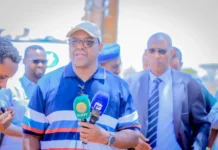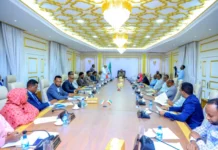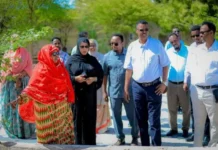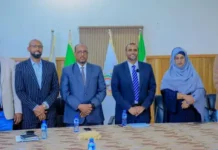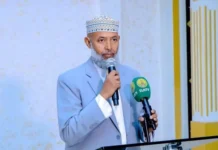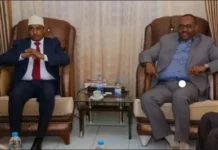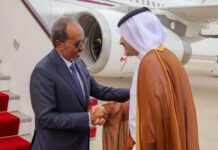In November 2018, GSMA M4H Insights team went to Hargeisa to understand the success of mobile money cash and voucher assistance (CVA) in humanitarian settings better. We were impressed by how pervasive mobile money is in the region—with an active customer conducting 60 transactions per month over the ZAAD mobile money service.
In our new case study, we discuss how Telesom ZAAD, the major mobile money provider in Somaliland, spearheaded mobile money and entered the humanitarian space.
In this blog, we gain more insight on the future of mobile money CVA in the region from ZAAD and Concern, an international NGO that has been operating in Somaliland since 1986.
Guest Contributors:
Abdirahman Adam Shire, Telsom Zaad, Head of Mobile Money Services (Zaad). Abdirahman has been managing ZAAD successfully for the past 10 years as has been featured in numerous articles from its infancy to its global success that has attracted numerous articles including being referenced by Bill Gates.
Rory Crew, Somali Cash Consortium, Finance and Systems Director. Rory has worked in Consortia coordination roles since 2015 on projects in Sudan, South Sudan, Chad, Pakistan and since March 2018 has been the Finance and Systems Director of the Somali Cash Consortium.
In our visit to Hargeisa, Zaad mentioned that the company made the strategic decision to first “create the value, and then capture it.” Given that 78% of adults use mobile money services in Somaliland, how do you intend to earn more revenues from your customers? And how do humanitarian organisations fit into your revenue model?
ZAAD: When we first launched we wanted to fill the gap created by the lack of adequate financial institutions in the country, and create an ecosystem that places our services at the centre of our customer needs. At the time of our launch, we recognized that imposing fees would undermine the mobile wallet adoption rate due to poor financial literacy of our community. Although we have achieved higher penetration rate, we remain committed in maintaining a ‘no transaction fee’ strategy but that is not say that we create no revenue from the service. In fact, our mobile airtime and data sales have increased significantly. In addition, we aim to create revenues by providing next generation services that includes e-commerce, cross border remittances and much more on the horizon.
Moreover, we have partnerships with many humanitarian organisations, and through these partnerships understand the challenges they face in delivering aid to the most needed. With the use of our next generation services, we want to deepen our relationships by providing not just efficient cash delivery service but a cost effective one. Humanitarian organisations will able to verify their beneficiaries in real time and in so doing will be able make significant savings, with our goal to keep cost on both sides at a minimum.
Our case study highlights that many I-NGOs use mobile money for CVA. What drove both Concern, and the Somali Cash Consortium, that Concern leads, to use mobile money?
CONCERN: Concern has provided CVA in Somalia for a long time, initially using vouchers and then moving to physical cash where it was possible and made sense. The move to mobile money in 2014, was a natural one. Transporting large amounts of physical cash in insecure areas has security risks for beneficiaries and staff, and is costly to do. Mobile money greatly reduced these risks, as well as costs, which meant that more of the already stretched aid budget went towards directly benefiting those most in need.
When the Somali Cash Consortium formed in October 2017, given the maturity of the mobile money ecosystem, cost efficiencies required by the donor and the security situation – mobile money was the obvious choice.
Regulation remains a perceived challenge among humanitarian organisations—especially large UN agencies— to use mobile money. They cite the lack of a National ID system in the country and that the mobile money service cannot actually verify beneficiaries. How does Telesom ZAAD address this concern?
ZAAD: Mobile money in Somaliland is widely accepted service and Telesom has been working with the humanitarian sector since 2010. The Central Bank of Somaliland (Bank), which supervises and regulates mobile financial services, has taken a pragmatic approach and offers tiered KYC account. This enables customers, who may not have the Bank’s required documents (such as a national ID or passport) with low value accounts and verified references from reputable members of their community.
Moreover, ZAAD is also working towards developing a real time verification solution that would also provide real time reporting. This will greatly improve the current verification system and can adequately address concerns expressed by humanitarian organisations.
Similarly, how does Concern address the regulatory challenges?
CONCERN: Mobile money was the only way the Somali Cash Consortium could reliably, consistently and efficiently reach those most in need, particularly in rural communities and in areas where humanitarian access is severely restricted.
Our ethos at the Somali Cash Consortium is to be open and honest – this extended into our risk management. We felt it was important to be clear what the risks were with our donors, board, partners and staff. Where possible, we built in mitigations to the risks, in some cases using low tech approaches. For example, to reduce the chance that beneficiaries sign-up multiple times for the programme, each partner registered at similar times across the whole country. We also work in a structured way with community leaders to ensure we’re only registering people from that community, and that there are no duplicates, when beneficiaries do not have National IDs.
We’re also engaging with mobile network operators (MNOs) to make it clear what they can do to make their systems stronger and leaner, as this helps us reach beneficiaries more quickly and effectively. We’re also working with regional and international private sector firms to pilot ways to reduce these risks, with biometrics or by building a registry and using artificial intelligence to spot duplicate beneficiaries.
Lastly, we recognise that collaborating with other cash actors is vital, particularly in avoiding the same beneficiaries in overlapping programmes. This coordination isn’t always easy, as organisations often have different internal and external regulations, but we’ve seen a real effort in the last 12-months to be more open and collaborative.
What are the three tips you have for humanitarian organisations that are seeking to partner with you to distribute and/or design a mobile money CVA product with you?
ZAAD: ZAAD has created a digital financial ecosystem that offers humanitarian organisations a cost effective, efficient and transparent CVA delivery. Partnerships take time particularly when there are multiple donors involved. Thus, our recommendation is to start the partnership process as early as possible. It is important to have clear objectives and an in-depth cost and benefit analysis so that the donors can reach their decision with ample time. Parties should also agree to standard terms of engagement in advance so that each party is very clear on their responsibilities.
How can the two sectors work together to understand what each other does best, and to develop innovative products that can help build a digital ecosystem—for beneficiaries, host communities and humanitarian staff?
ZAAD: Creating long term partnerships, understanding the strengths and weaknesses of each sector and covering the gaps through continued collaboration while leveraging technology is a way that two sectors can realize their vision. Humanitarian organisations need to clearly define their requirements so that the sector can design a bespoke solution that is not only efficient but is also cost effective. More importantly, the willingness of humanitarian organisations to embrace technology to advance their work must not remain an obstacle to this endeavour.
Concern: First, we all need to understand that driving forward the digital ecosystem goes beyond the work of the MNO and the humanitarian community. It needs to involve national and international regulators, private sector technology firms, traditional financial institutions, and most importantly the end users.
Secondly, agreeing on what basis partnerships should proceed is key, which comes with practice and a healthy amount of trial and error. Key questions to be answered early and honestly are:
- who will fund developing new products;
- do the stakeholders have expertise develop the product, or is external support needed;
- what timelines are realistic;
- who are the true decision makers, doers and responsible people on all sides; and
- how will end users be involved from day one?
These partnerships also need to be formalised through agreements which highlight the shared value and recognises each party’s mandate; profit through providing a service for MNOs and delivering humanitarian aid for NGOs and which recognises party’s key strengths; capacity to introduce technological innovation for MNOS and last mile contact with beneficiaries for NGOs.
Given the number of mobile money CVA programmes in Somaliland, M4H is working with the Somalia Cash Working Group and MNOs in the region to understand the challenges they may face, and solutions that can address these challenges. In the next few months, M4H will be publishing similar case studies on mobile money CVA in Uganda and Jordan.


